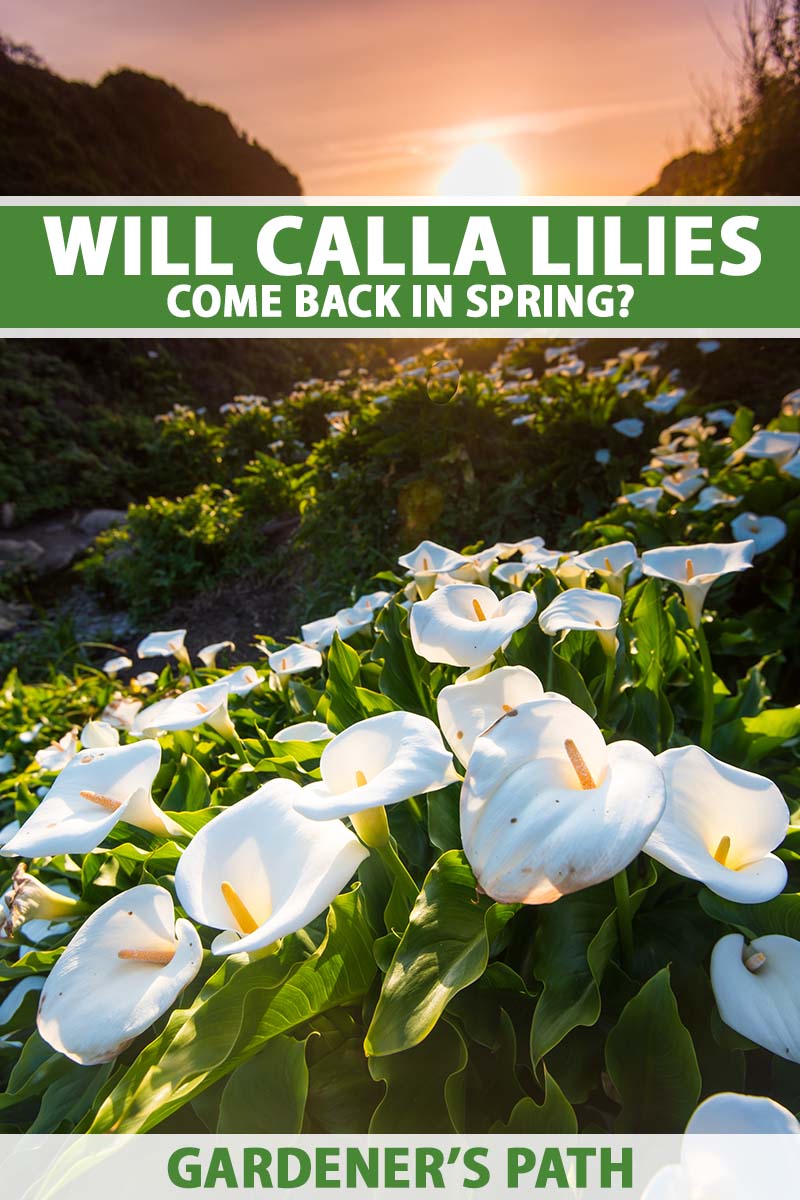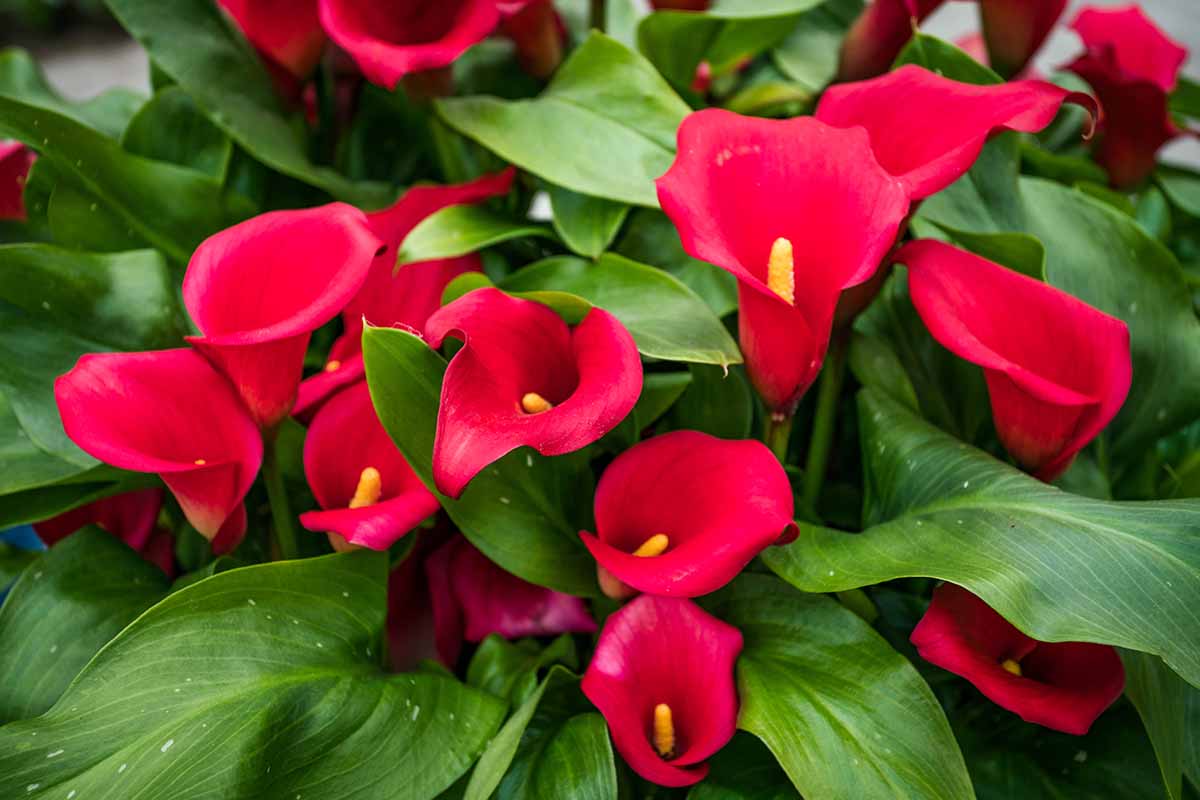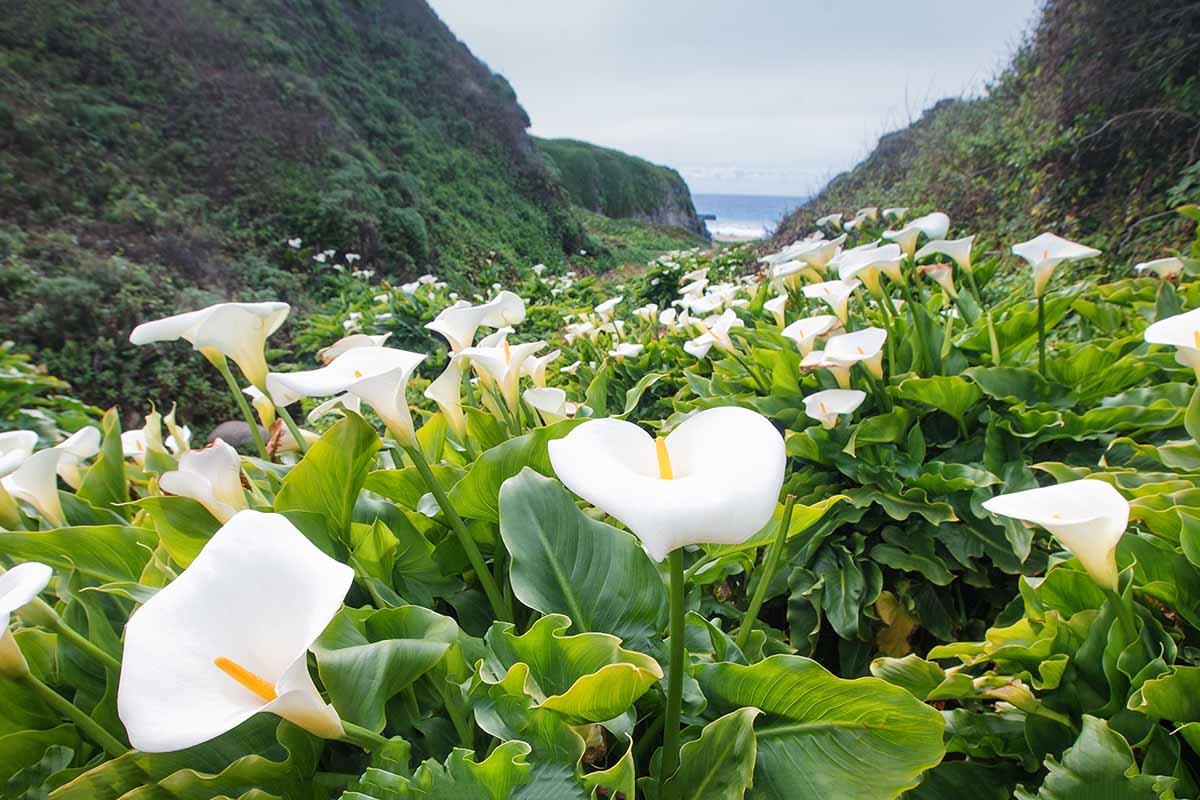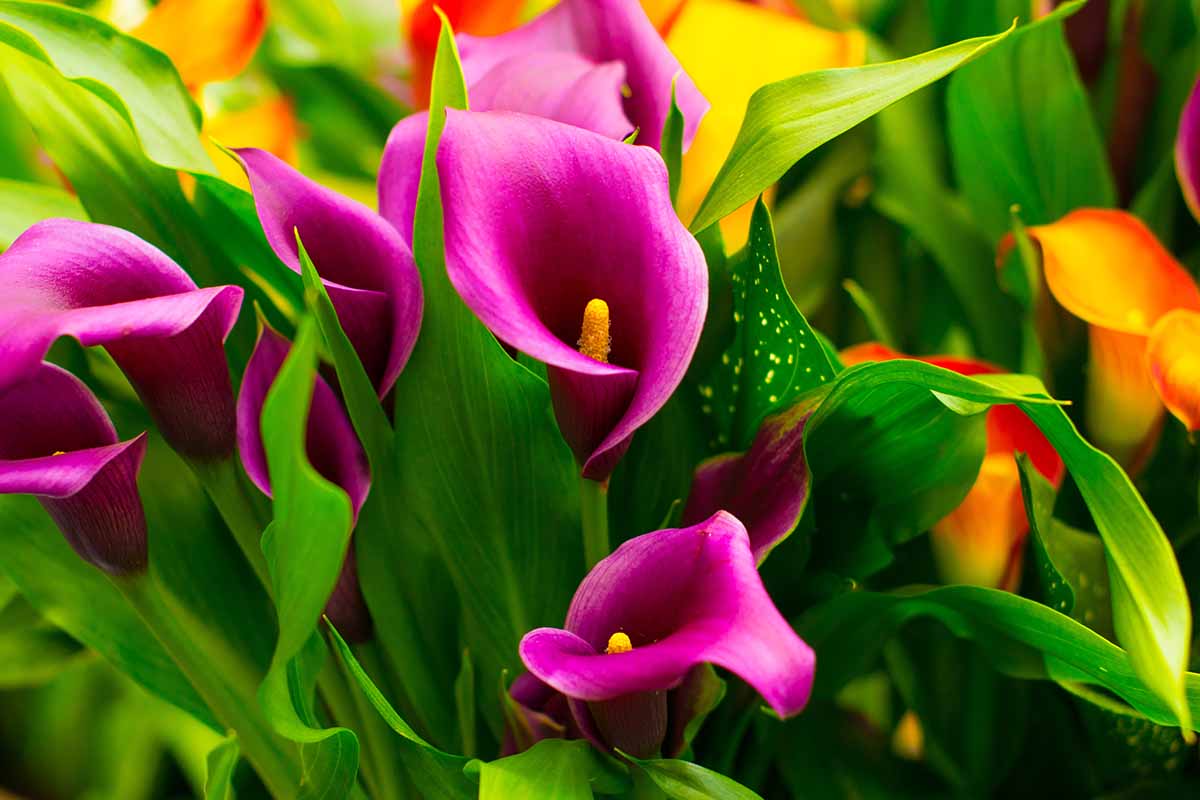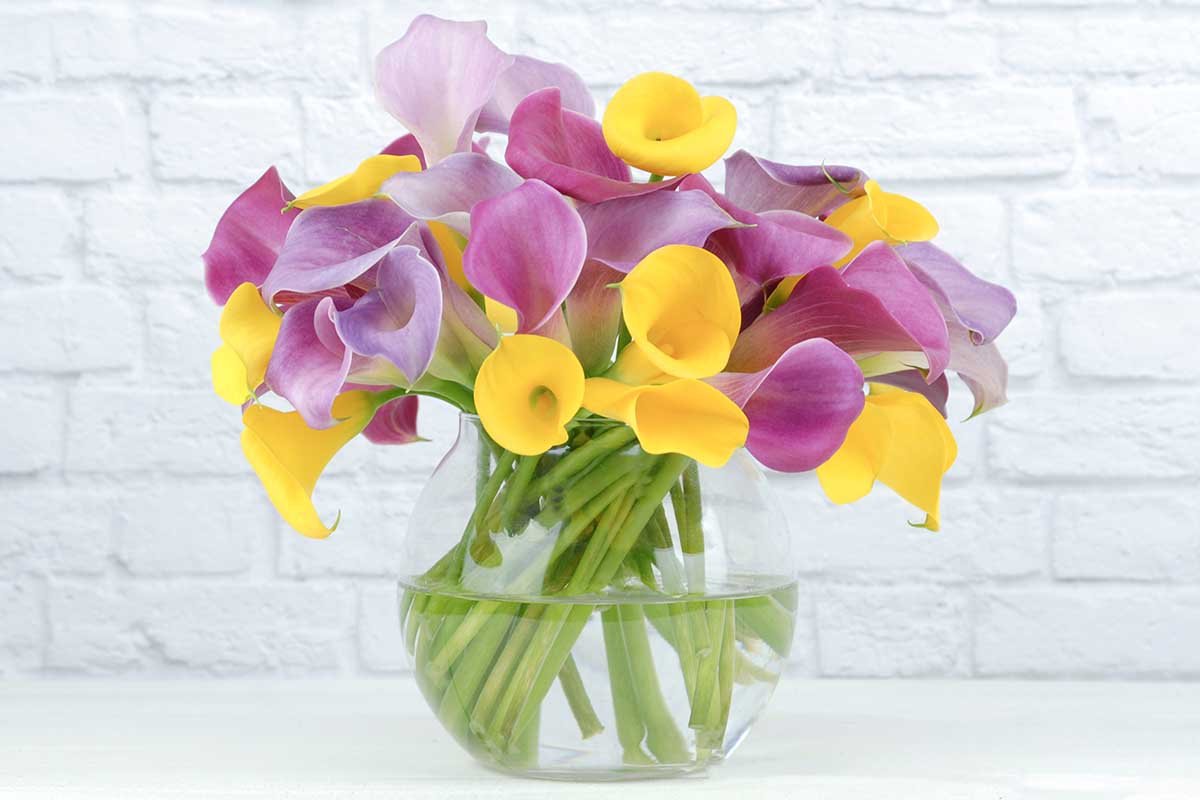Frost-tender perennials, there are two main types commonly cultivated by home gardeners – and there’s a bit of confusion about whether they can overwinter in place. We link to vendors to help you find relevant products. If you buy from one of our links, we may earn a commission. The second type includes the many colorful Zantedeschia hybrids, in hot shades of apricot, burgundy, mauve, orange, pink, purple, red, and yellow. These herbaceous perennials are primarily crosses of the species Z. albomaculata, Z. elliottiana, Z. pentlandii, and Z. rehmannii. Both types are native to Africa and are limited in their cold hardiness, but they can overwinter in the garden when given the right conditions. Whether these tender plants come back in spring depends a great deal on your winter climate, or hardiness zone. If winter temperatures fall within an acceptable range, they can be left in place to emerge from dormancy and resume growth when the days lengthen and warm. But if your garden is outside this range, you’ll have to lift and store the rhizomes before replanting in spring, or grow them as annuals. When you’re garden planning, it’s helpful to know about calla lily hardiness to determine if they’ll return to your garden in the springtime. Here’s what we’re looking at up ahead:
Are Calla Lilies Winter-Hardy?
Members of the Zantedeschia genus, callas are frost-tender, herbaceous perennials that can overwinter outdoors in USDA Hardiness Zones 8 to 11. Zone 8 is the coolest region within the recommended area with an average minimum temperature range of 10 to 20°F. If your winter temperatures stay above 10°F, they can safely stay in the ground. Learn more in our guide to USDA Hardiness Zones to find your average minimum temperature range. The clump-forming plants are native to central and southern Africa where they may thrive in a variety of habitats including grassy plains, marshes, and rocky slopes. They grow and flower in the rainy season and then go dormant to survive the dry season. In areas too cold for them to survive, they can be lifted and stored for winter dormancy and replanted in spring. The hardiness of each species or hybrid can vary, falling somewhere within the range of Zones 8 to 11, but not necessarily encompassing all of these zones. If you plan to overwinter your plants rather than growing them as annuals, check the individual plant specs to ensure a particular variety is suitable for your region. Providing suitable winter temperatures is important for arums and hybrids to come back in spring, but correct winter conditions beyond the cold are critical as well. Zantedeschia plants are prone to rot in wet conditions, and cannot tolerate standing water or overly wet soil. To overwinter successfully, they must have well-draining soil – more details on that are available in our guide to calla lily winter care. Now, let’s see how each type behaves in winter.
Type 1 – Arum Lilies
An evergreen to semi-evergreen species, Z. aethiopica grows from stemless rhizomes. In the right conditions – with mild to warm temperatures, ample moisture, and adequate sunlight – they retain their strappy or arrow-shaped foliage all year. In cooler regions, the foliage may die back partially or completely in winter, and a hard frost can blacken all the leaves. In areas too cold for them to survive, potted arums are often brought in to spend the chilly months indoors as houseplants – provided the soil is kept moist and they have a location with bright, indirect light. An alternative to bringing live plants indoors is to force the rhizomes into dormancy by withholding water. The rhizomes can then be lifted from the soil in fall and stored over winter. Z. aethiopica is also a popular bog or pond plant, but water temperatures must remain above 65°F for the rhizomes to survive. Species plants are hardy in Zones 8 to 10, and many hybrids are hardy in Zones 8 to 11. Some overwintering success can be found in Zone 7, provided plants are well mulched and located in a sheltered spot – but they won’t remain evergreen in these temperatures.
Type 2 – Colorful Hybrids
The bright and bold hybrids require a period of winter dormancy to rebloom. Deciduous plants, their foliage dies back completely in autumn as they wind down for dormancy. These plants can also overwinter in areas with mild winters. But, as mentioned, they enter dormancy in dry conditions. This means they can’t abide standing water or cold, wet conditions. As such, these types are most often lifted in fall, stored for winter, then replanted in spring. The colorful hybrids also produce flowers more consistently when divided regularly, so even if they can survive winters in your region, they benefit from lifting and division. The colorful hybrids are cold-hardy in Zones 8 to 11. These tender perennials can overwinter in areas with mild winters. But even if you’re outside the hardiness range of your favorite Zantedeschia, you can still enjoy their return in spring – just lift and store the bulbs, then replant when warm weather returns! Container-grown plants can also be cared for indoors through the duration of the coldest times of year, before being brought back out to enjoy the warmer springtime temperatures. Do you have questions about calla lily hardiness? Let us know in the comments section below. For more information about growing and caring for calla lilies in your garden, check out these guides next:
How to Grow Calla Lilies for Easy Sophistication21 of the Best Calla Lilies for Sensational Summer Blooms7 Reasons for Drooping Calla Lilies
